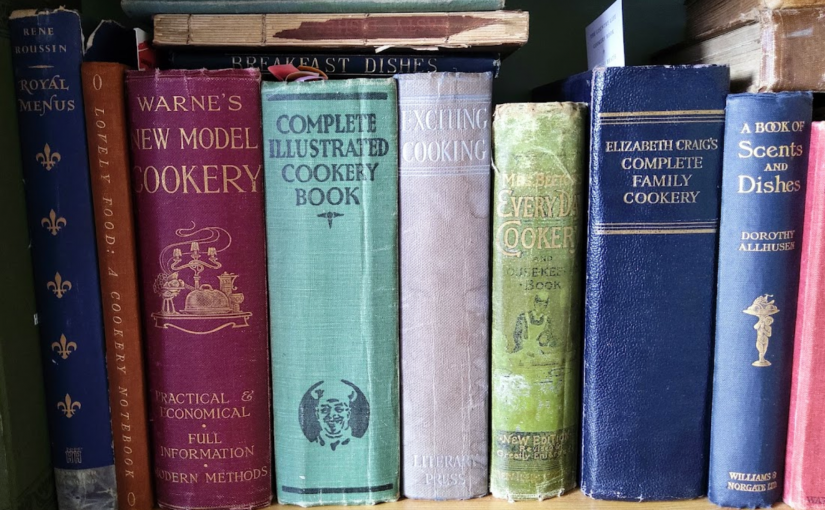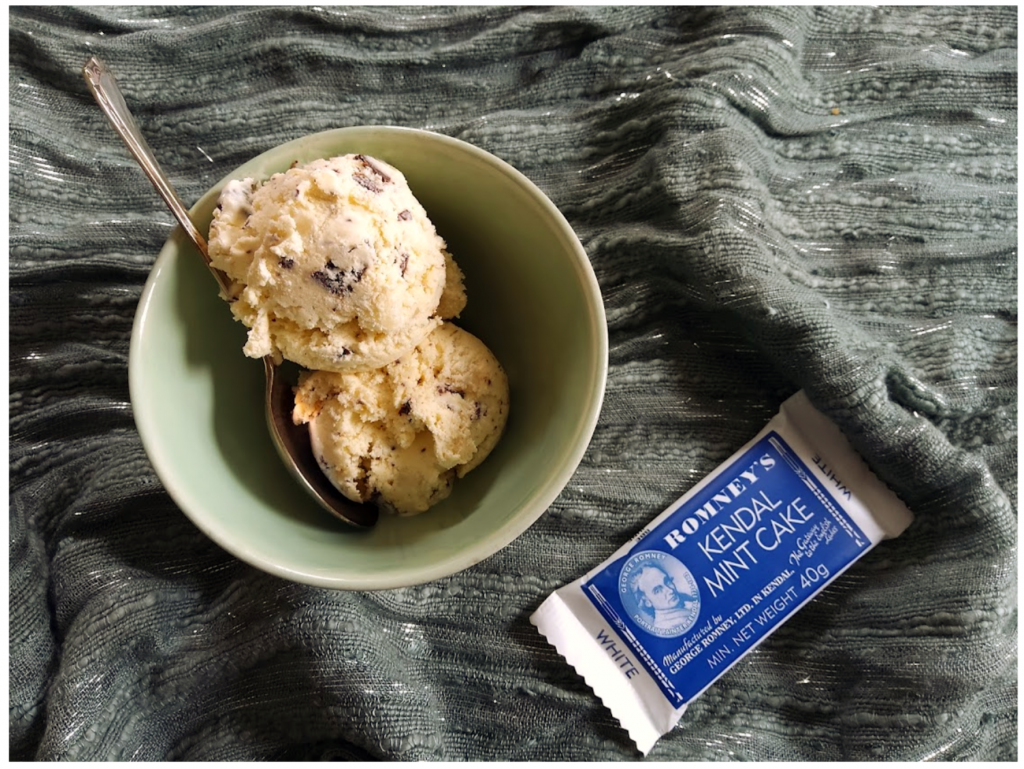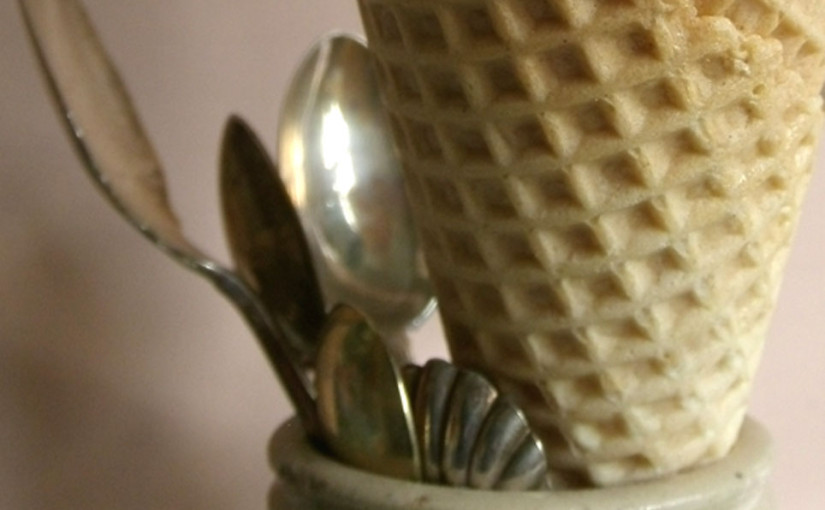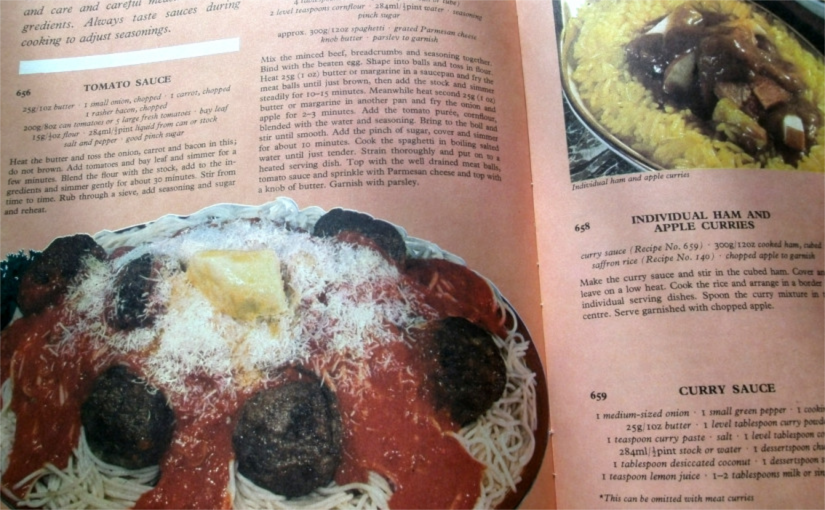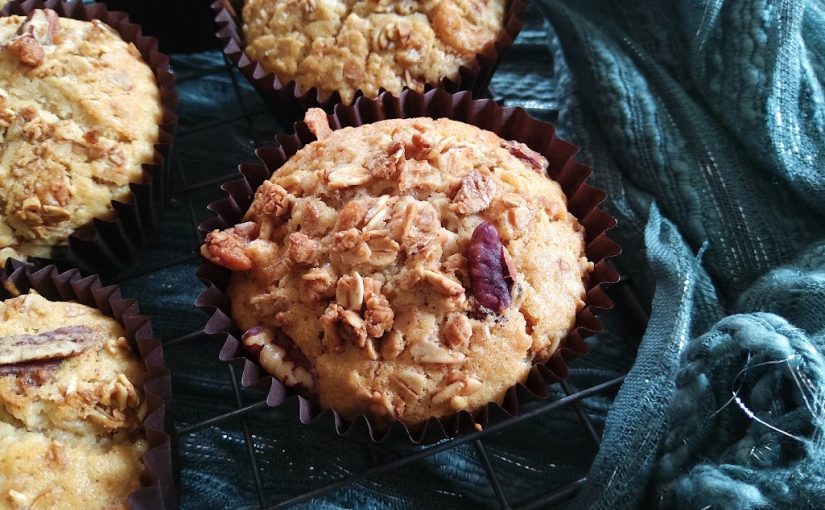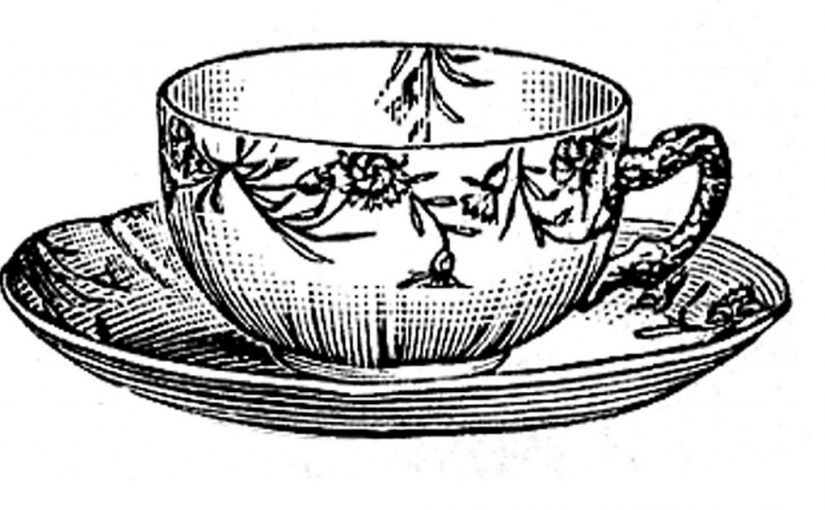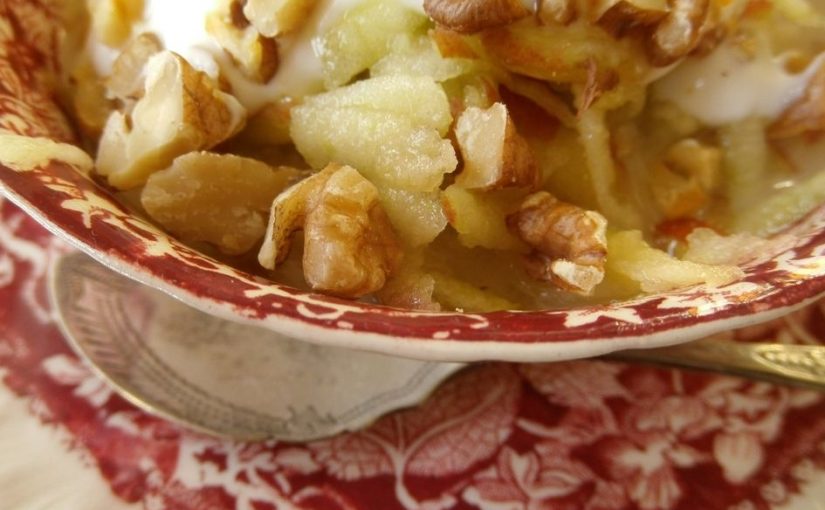You’ve heard the joke about the chicken who goes into a library and says “book, book, book”, right? No? Eventually the chicken is discovered delivering the books to a frog, who tosses them aside saying “reddit, reddit”…
Now, I love books. Especially cookbooks. Particularly if they’re vintage cookbooks. When I first published this post in 2019 there were 81 books actually on the shelves, There’s probably way more now, I never stopped buying them and J’s books are now there too; but right this minute I’m drinking tea and typing and don’t want to get up and check. There are more under the coffee table, on the coffee table, and languishing in corners. I know that I’m a bit lightweight compared to some; one blogger confesses to having around 10,000! Idk, but that seems a bit excessive…
It would be great to have enough to organise them by colour, which would have the added bonus of really annoying the rest of the family!
Anyway, like many cookbook addicts I buy books on a whim; maybe the cover looks nice, or you flick through and find a couple of recipes that you fancy. I love big pretty pictures that seem to promise a lifestyle that can be achieved, if only you try the recipes. Do we use the books? Sometimes. Too often we try one or two recipes from a book (sometimes none at all), then never pick it up again.
Oh, the guilt! Maybe I’ll feel better if I buy more books?
I really want to go through every single book, trying something different, or just trying something. It’s going to take a while though. Then we have the problem with Pinterest…
Sigh. I had started going through the books and reviewing them before the previous version of the blog went belly up. Rather than recreate those reviews I think I’ll just carry on where I left off. Let’s do this!
The oldest cookbook ever printed on a mass scale (but by no means the oldest collection of recipes) is ‘De honesta voluptate et valetudine’, written around 1465 by Italian Renaissance writer, Bartolomeo Platina.
